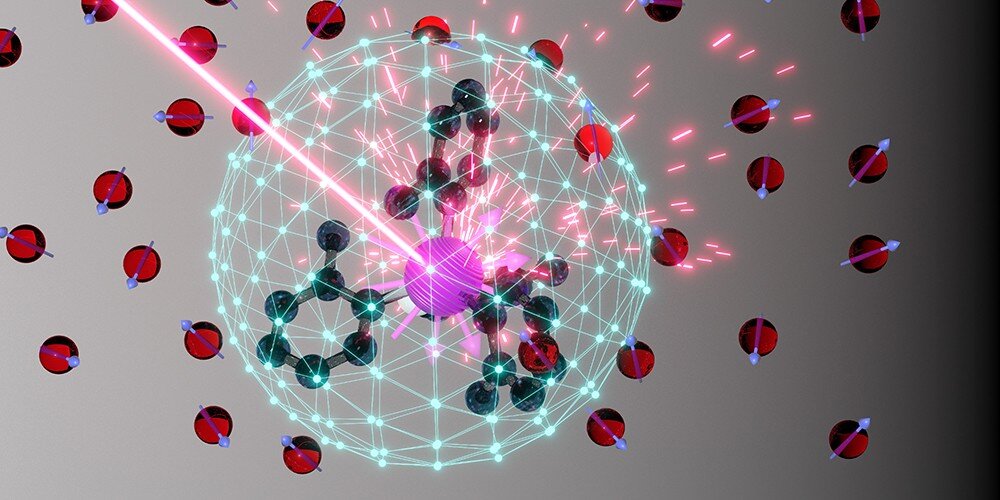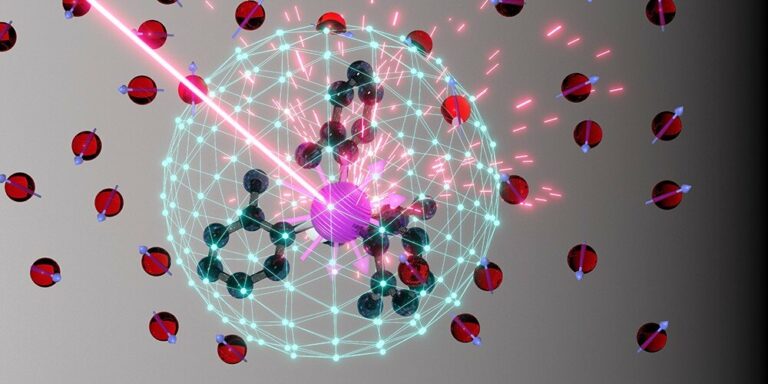Creating Molecular Qubits with Resilience and Scalability in Engineering
The concept of “symmetry” is essential to fundamental physics: a crucial element in everything from subatomic particles to macroscopic crystals. Accordingly, a lack of symmetry—or asymmetry—can drastically affect the properties of a given system.
Qubits, the quantum analog of computer bits for quantum computers, are extremely sensitive—the barest disturbance in a qubit system is enough for it to lose any quantum information it might have carried. Given this fragility, it seems intuitive that qubits would be most stable in a symmetric environment. However, for a certain type of qubit—a molecular qubit—the opposite is true.
Researchers from the University of Chicago’s Pritzker School of Molecular Engineering (PME), the University of Glasgow, and the Massachusetts Institute of Technology have found that molecular qubits are much more stable in an asymmetric environment, expanding the possible applications of such qubits, especially as biological quantum sensors.

“Molecular qubits are remarkably versatile, since they can be custom-engineered and placed in a variety of different environments,” said David Awschalom, the Liew Family Professor in Molecular Engineering and Physics at UChicago, senior scientist at Argonne, director of the Chicago Quantum Exchange, and director of Q-NEXT, a Department of Energy Quantum Information Science Center. “Developing this method of stabilizing them opens new doors for potential applications of this emerging technology.”
Using a system as a qubit requires it to have two quantum states that can correspond to “0” and “1,” as in a classical computer. But quantum states are fragile, and will collapse if disturbed in any way. Quantum scientists have been pushing the limits of how long they can make a qubit hold a quantum state before collapsing, also known as “coherence time.”
Shielding qubits from as much external influence as possible is one way to try to increase their coherence time, and by placing the molecular qubits in an asymmetric crystal array, Awschalom and his team found that certain quantum states were much less sensitive to external magnetic fields, and thus had longer coherence times: 10 µs, compared to 2 µs for identical qubits in a symmetric crystal array.
Dan Laorenza, a chemistry graduate student at MIT who worked on the project, says the asymmetric environment provides “coherence protection” that could allow the qubits to keep their quantum information even if placed in more chaotic places.
“We now understand a direct and reliable mechanism to improve coherence of molecular qubits in magnetically noisy environments,” he said. “Most importantly, this asymmetric environment is easily translated to many other molecular systems, especially for molecules put in amorphous environments like those found in biology.”
Qubit quantum sensors have myriad potential applications in biological systems, especially in medical contexts; but these systems are known for being unstructured and noisy, which makes maintaining the coherence of these qubit sensors a very difficult challenge. Learning why an asymmetric environment stabilizes molecular qubits against magnetic fields could lead to better sensors in these research fields.
This article is republished from PhysORG under a Creative Commons license. Read the original article.
Do not forget to share your opinion with us to provide you with the best posts !




0 Comments